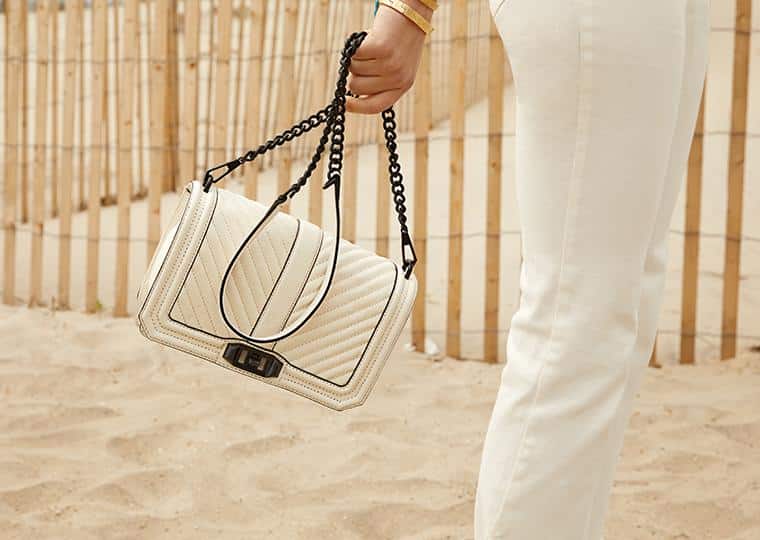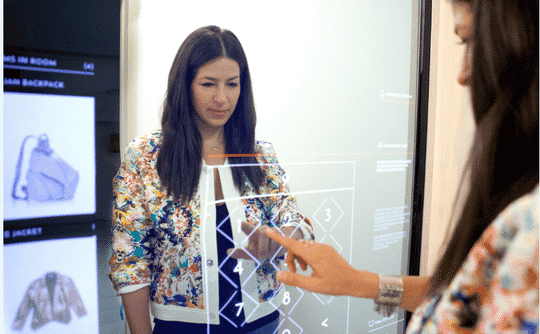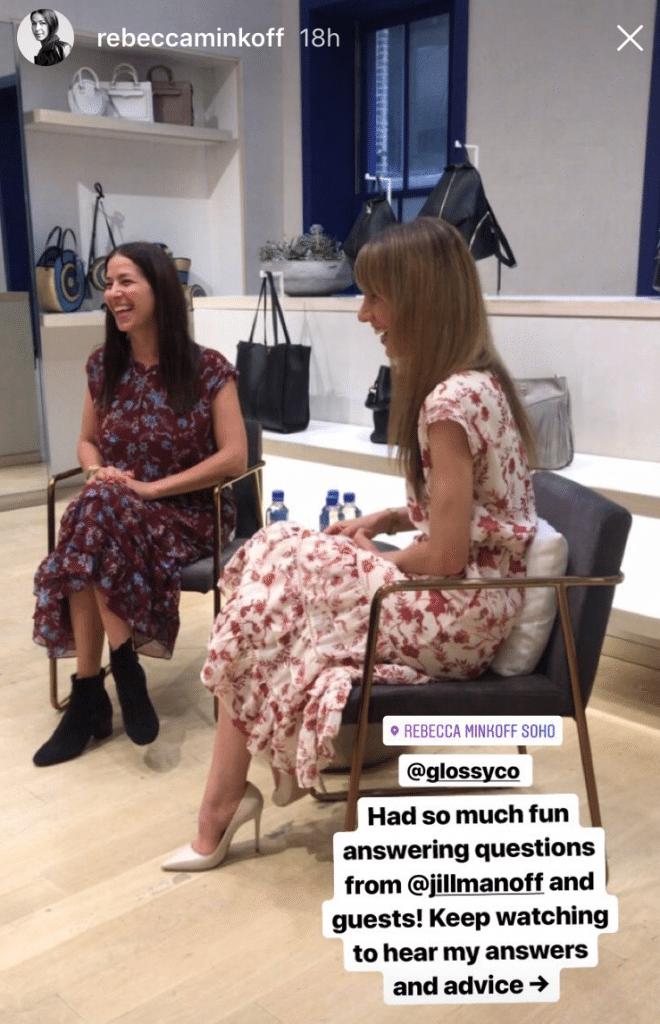Article
The Future of Retail, According to Rebecca Minkoff
July 2, 2018

It’s an all-too-common narrative: Malls are dead. Retail is dead. Long live ecommerce. But Rebecca Minkoff points out the inherent flaw in that logic, noting that it’s the malls that didn’t adapt are dying.
We may do more things online, but we still live — and shop — in the physical world. According to U.S. Census data from last summer, 90% of retail purchases happen IRL. But of course, the proliferation of mobile devices allows us to be continually online and retail experiences need to reflect that.
“We’re not just going to sit in our houses and order s**t, and have no place to wear it,” she said during a fireside chat with Glossy at her New York City flagship store.
How Rebecca Minkoff Stores Do Reflect That
Fitting rooms offer adjustable lights and the ability to “order” more items to try on, without having to get dressed and go back into the store. Since 2014, the brand has used touchscreen technology in the mirrors, showcasing Minkoff’s latest collections, and allowing consumers to make purchases and even order drinks.

Additionally, the mirrors sync with radio frequency identification-enabled clothing tags, offering additional sizes and complementary items. These innovations are designed to improve the customer experience, both in obvious and more subtle ways. When consumers abandon online shopping carts, retailers can see the actions that led them there. With technology, “dressing room abandonment” provides better data that can be utilized to improve the customer experience.
“The role of the store is to be a brand ambassador. It should be an extension of what we stand for,” she says. “Our goal for our retail stores is for them to feel like a physical iteration of the community we have established online.”
Plans to incorporate more online features (in-store pick-up, for one) into her retail locations, recognizing that a commitment to brick and click is the only way to stay ahead of the curve. She currently splits her merchandise evenly between physical, digital and wholesale channels.
The Blending of Content and Commerce
Minkoff discontinued the blog on her website. It’s not that she doesn’t see the value in content; she doesn’t see the value in sectioning it off into its own designated place.
“We got rid of the blog and embedded snippets of content into the product pages,” she says. “We use content everywhere because we think of the shopping experience as being 360 degrees.”
Or, more likely, Instagram. Minkoff gets more traffic from Instagram than Google and is an avid user of Stories. (Rebecca Minkoff the person has 807,000 Instagram followers, about 5,000% more than @shoprebeccaminkoff). Her Stories include press mentions and often incorporate user-generated content, celebrating the women contributing to the #MyRM hashtag.

Minkoff doesn’t do much in the way of video content and commerce, but it’s in the planning stages.
The Rise of Direct-to-Consumer Brands
During the post-chat Q+A, Minkoff talked about her biggest competitors. They’re not who you’d expect.
“It’s a lot of little people taking bites of our business, rather than the big names like Michael Kors, Kate Spade and Marc Jacobs,” she says. “Direct-to-consumer brands have a way of getting to the heart of the customer and people want to belong to the tribe.”
She’s referring to the Everlanes and the Cuyanas of the world. In her opinion, those brands are much closer to the future of retail than the elephant in the room, Amazon.
“Data may say all women want red blouses, but I don’t believe an algorithm will ever be able to tell a woman how to dress,” she says.
Title image courtesy of RebeccaMinkoff.com.
Learn more about how Marigold Engage by Sailthru’s Marketing Automation Platform can help you stay at the forefront of modernizing experience management.
The State of Brand Loyalty in the U.S. in 2023
Related



